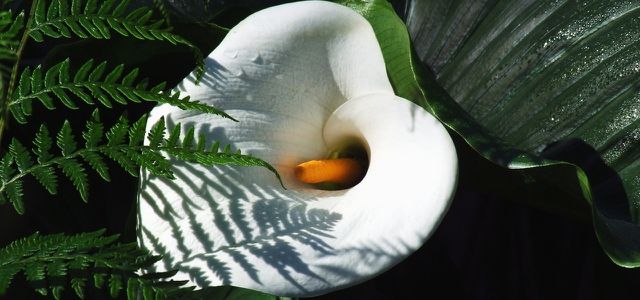
Plants convert CO2 into oxygen and thus ensure fresh air. However, some plants can do much more than that: Some plants clean the air of pollutants and thus improve the indoor air in your room. We show you five air-purifying plants.
Contents
Plants against bad indoor air
We spend about 80 to 90 percent of our lives indoors. But only a few rooms have plants in them. Yet that is exactly what would be very important.
Because thanks to paints, varnishes, electrical appliances, furniture and even carpets, there are partly toxic vapors in our indoor air. These include trichloroethylene, formaldehyde, benzene, xylene and ammonia – all of which are gases of concern. They can be triggers for headaches, dizziness, allergies and other illnesses. They also prevent concentration and make us unproductive.
But almost 30 years ago, NASA was able to prove in a study that certain houseplants break down chemical pollutants and thus improve the indoor climate. With its “Clean Air Study,” the American space agency originally wanted to find out how to improve the climate in space stations. The result was a list of air-purifying plants.
Six plants for a good indoor climate
Houseplants are not only pretty to look at, they are also sound absorbers, oxygen donors, air humidifiers and pollutant filters all in one. Especially in winter, the natural air purifiers can provide a pleasant, fresh atmosphere and help against dry heating air.
In order for the plants to develop their air-purifying effect, the researchers recommend at least one plant per nine square meters. The larger the plant, the greater the effect.
Peace lily: The plant, also known as sheath leaf, is a true all-rounder and binds most toxins from the air. It is easy to care for and only requires a warm place with indirect sunlight. Its big disadvantage is that it is poisonous to dogs and cats, and some allergy sufferers are also sensitive to it.
Chrysanthemum: The chrysanthemum is also an all-rounder, but unfortunately also poisonous for our four-legged companions. The houseplant likes it sunny and to be watered regularly. Waterlogging should be avoided as well as drying out.
Dragon tree (Dracaena reflexa): Dragon tree, bow hemp and ivy clean your air of almost all the pollutants mentioned, except for ammonia. This beautiful-looking evergreen Southerner prefers a bright location and sparing watering.
Bow hemp (Sansevieria trifasciata): This exotic plant is probably one of the easiest to care for natural air purifiers. It enjoys plenty of sun and occasional fertilizing.
Common ivy: The ivy thrives best in bright places without direct sunlight. However, it should not get warmer than 20° C in the long run. The plant is also frugal when it comes to watering. Ivy gets by with little water, but wants to be watered regularly.
Ivy: You can’t go far wrong with this climbing plant. It needs a bright location, a gentle shower from a spray bottle every now and then, and all you need to do is water it once a week.
Exotic houseplants can be toxic
Most of the plants from the Nasa study are tropical or subtropical plants. For garden and balcony, we tend to advise against exotic plants – for exotic houseplants, you should at least follow these rules of thumb:
Beware of cheap flowers from hardware stores, furniture stores or supermarkets. The plants sold there are often treated with pesticides during cultivation – this is harmful to the indoor climate and health.
It’s best to buy your plant from a local organic nursery, where you’ll also get better advice. Or you can ask your friends and acquaintances for cuttings to grow them yourself.
Caution: Some of the plants on the NASA list may be toxic to animals. If you have animals in the household, check beforehand whether the houseplants you have chosen belong to them.
Improve indoor air – more tips
Even if you’ve stocked your interiors with plenty of air-purifying plants, the following tips can again improve your indoor air.
Ventilate properly: Regular intermittent ventilation ensures fresh air and transports germs outside.
A vacuum cleaner with an allergy filter (HEPA filter) reduces house dust pollution
If you don’t sleep with an open window, make sure your bedroom plants don’t “breathe” the air away from you. A good example is the bow hemp. It stores CO² and thus does not make the air stuffy.
The optimal room temperature for well-being and full concentration is between 20-25° C and humidity between 40-60 percent.

